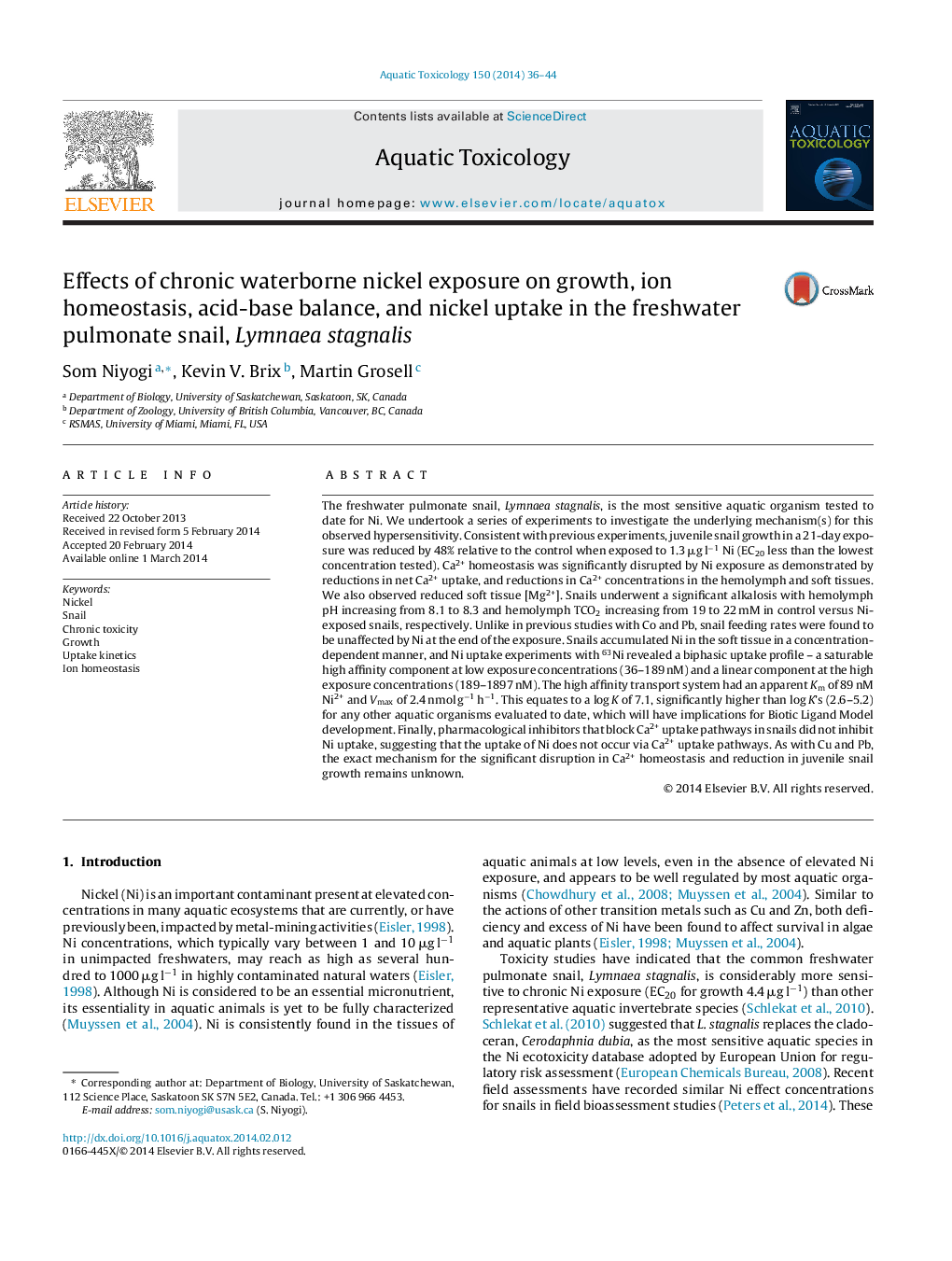| کد مقاله | کد نشریه | سال انتشار | مقاله انگلیسی | نسخه تمام متن |
|---|---|---|---|---|
| 4529265 | 1625955 | 2014 | 9 صفحه PDF | دانلود رایگان |

• Lymnaea stagnalis is extremely sensitive to waterborne nickel exposure.
• Growth in Lymnaea is the most sensitive endpoint during chronic nickel exposure.
• Nickel disrupts ion homeostasis and acid-base balance in Lymnaea.
• Lymnaea accumulates nickel in a dose-dependent manner during chronic exposure.
• No direct interactions between nickel and calcium occur in Lymnaea.
The freshwater pulmonate snail, Lymnaea stagnalis, is the most sensitive aquatic organism tested to date for Ni. We undertook a series of experiments to investigate the underlying mechanism(s) for this observed hypersensitivity. Consistent with previous experiments, juvenile snail growth in a 21-day exposure was reduced by 48% relative to the control when exposed to 1.3 μg l−1 Ni (EC20 less than the lowest concentration tested). Ca2+ homeostasis was significantly disrupted by Ni exposure as demonstrated by reductions in net Ca2+ uptake, and reductions in Ca2+ concentrations in the hemolymph and soft tissues. We also observed reduced soft tissue [Mg2+]. Snails underwent a significant alkalosis with hemolymph pH increasing from 8.1 to 8.3 and hemolymph TCO2 increasing from 19 to 22 mM in control versus Ni-exposed snails, respectively. Unlike in previous studies with Co and Pb, snail feeding rates were found to be unaffected by Ni at the end of the exposure. Snails accumulated Ni in the soft tissue in a concentration-dependent manner, and Ni uptake experiments with 63Ni revealed a biphasic uptake profile – a saturable high affinity component at low exposure concentrations (36–189 nM) and a linear component at the high exposure concentrations (189–1897 nM). The high affinity transport system had an apparent Km of 89 nM Ni2+ and Vmax of 2.4 nmol g−1 h−1. This equates to a log K of 7.1, significantly higher than log K's (2.6–5.2) for any other aquatic organisms evaluated to date, which will have implications for Biotic Ligand Model development. Finally, pharmacological inhibitors that block Ca2+ uptake pathways in snails did not inhibit Ni uptake, suggesting that the uptake of Ni does not occur via Ca2+ uptake pathways. As with Cu and Pb, the exact mechanism for the significant disruption in Ca2+ homeostasis and reduction in juvenile snail growth remains unknown.
Journal: Aquatic Toxicology - Volume 150, May 2014, Pages 36–44